How To Pick Rod Length and Action
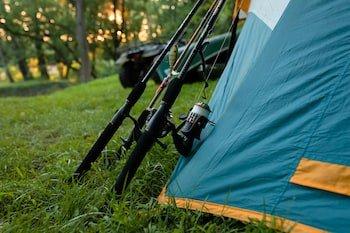
Picking the perfect rod for your needs is something that will come down to several variables. The size of your line, bait, lure, and fish you are targeting comes into play when selecting the right rod. Add in the fact that some lure types require specific rod actions to maximize their performance and choosing the right rod can make things even more complicated.
Rod Information
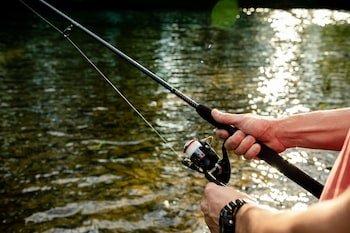
One of the most straightforward ways to see if a rod is right for you is to take a look at the information printed right on the rod.
Rods are rated for specific lure weights and line sizes, which is the first piece of the puzzle. Manufacturers include this information to share what that rod was built for and what it can handle. Using too light (or too heavy) of a lure can impact the rod’s performance and casting ability. The same is true of the line rating: using too heavy of a line can potentially damage a rod or even cause breakage.
The first step to picking the right rod is to check the rod’s lure and line rating and then continue to evaluate rod length, power, and action.
Length
Rod length is something that often comes down to personal preference and it can also be beneficial to choose a rod length based on your height. If you are of shorter stature, a long rod can be unwieldy when casting.
Another factor to consider is where you are fishing as a longer rod can greatly help cast a distance from fishing from shore. However, a shorter rod may be a better option if you are fishing around overhanging trees and obstacles.
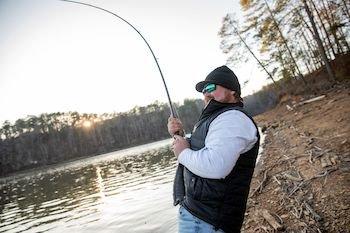
When talking bass fishing, two of the most popular sizes are 6’6,” and 7’ as these are versatile lengths that can do just about everything. It is no surprise that the Ugly Stik Elite Casting rod is offered in these two lengths only. An angler can do just about everything with these two rod sizes.
Rods under 6’6” are ideal for trout, panfish, and younger anglers. Longer rods over 7’ are popular for some bass fishing techniques such as using swimbaits and crankbaits and longer rods are also the go-to choice for anglers targeting salmon and steelhead.
Power
A rod’s power is just like it sounds and is rated based on the lure, fish size, and line it can handle. The actions range from ultra-light to extra extra-heavy and everywhere in between.
Ultra-light rods are ideal for smaller fish and light lures, but they can make fighting bigger fish a fun challenge. Light rods are the next step up and have slightly more power.
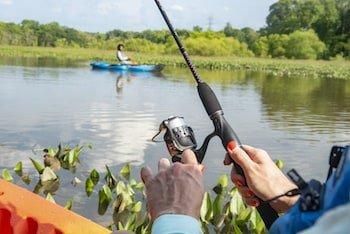
Medium is a universal rod power and also includes popular rods that are medium-light and also medium-heavy. For bass fishing, a medium-heavy is one of the most versatile options you can choose. A standard medium also works well for a variety of fishing techniques and a medium-light spinning rod is an excellent option for lighter lures, while still having enough power to land bigger fish.
Moving up to the heavy rod power, some ratings also include extra-heavy and even heavier. These rods are typically best for heavy line, big lures, and when targeting bigger fish.
Action
Simply put, a rod’s action is where the rod bends when pressure is applied. The most common rod actions are fast, moderate, and slow. They are broken down even further to include Extra-Fast, Medium Fast, Moderate Fast, etc. Like the names suggest, they all bend at different places of the rod and each has its benefits.
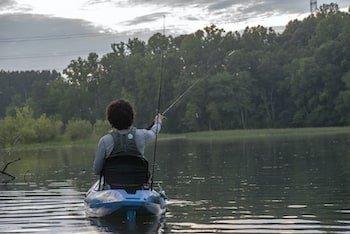
Each of the available actions is preferred for certain types of fishing. For the most part, all of the rods with a fast action variation will be the most sensitive, and these are better for lures where contact with the bottom is critical.
Moderate actions bend further down into the rod and create a more significant arc when fighting fish and retrieving lures. They are ideal for moving baits such as crankbaits and other faster-moving lures where rod sensitivity is not as crucial. While they may lack some sensitivity, moderate rods gain casting distance as the bend in the rod helps to catapult lures further.
Slow actions bend even further down into the rod blank and help cast lighter lures with light line, such as when fishing for panfish or trout.
Choosing the right rod comes down to many different factors and is part of the reason many anglers have multiple rods. This allows them to match a variety of conditions, fish species and lures. The best analogy is they are like a set of golf clubs, with each rod serving a specific purpose.
Once you have a good understanding of what a rods action, power, and length can do, it is easier to pick a perfect rod for your needs.